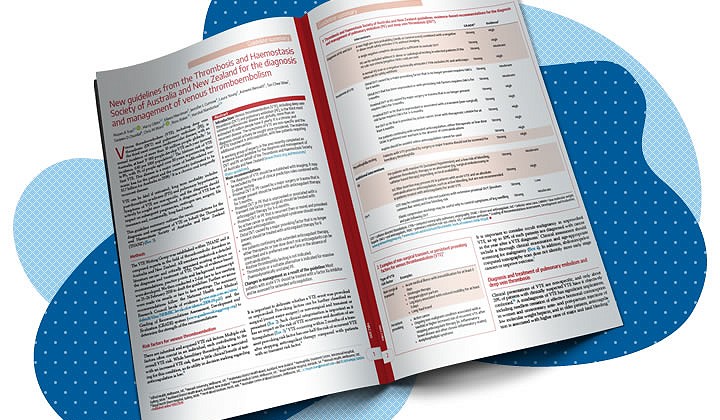
Venous thromboembolism (VTE), including deep vein thrombosis (DVT) and pulmonary embolism (PE), is the third most common cardiovascular disease, with an annual incidence of more than 10 million people globally. In Australia, at least 17 000 people develop VTE each year (annual incidence, 0.83 per 1000 population). The lifetime risk of VTE is 8%, with 1% of people aged over 80 years experiencing their first VTE. This disease is a major cause of health-related eco-nomic loss for the patient and the community (estimated to be $1.7 billion for Australia in 2008). It is a chronic and frequently recurrent disease.
VTE can be fatal if untreated; long term morbidity includes post-thrombotic syndrome (PTS) and pulmonary hypertension. Symptoms of VTE are non-specific, and the diagnosis should actively be sought once considered. A diagnosis of VTE has an impact on subsequent pregnancies, oestrogen use, surgery, life insurance and, occasionally, long-haul travel.
This guideline summary outlines the recommendations for the diagnosis and management of VTE on behalf the Thrombosis and Haemostasis Society of Australia and New Zealand (THANZ).


